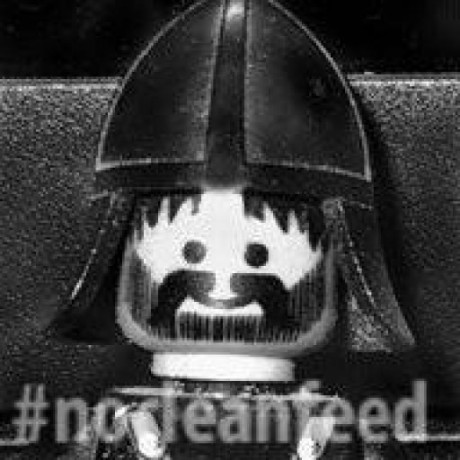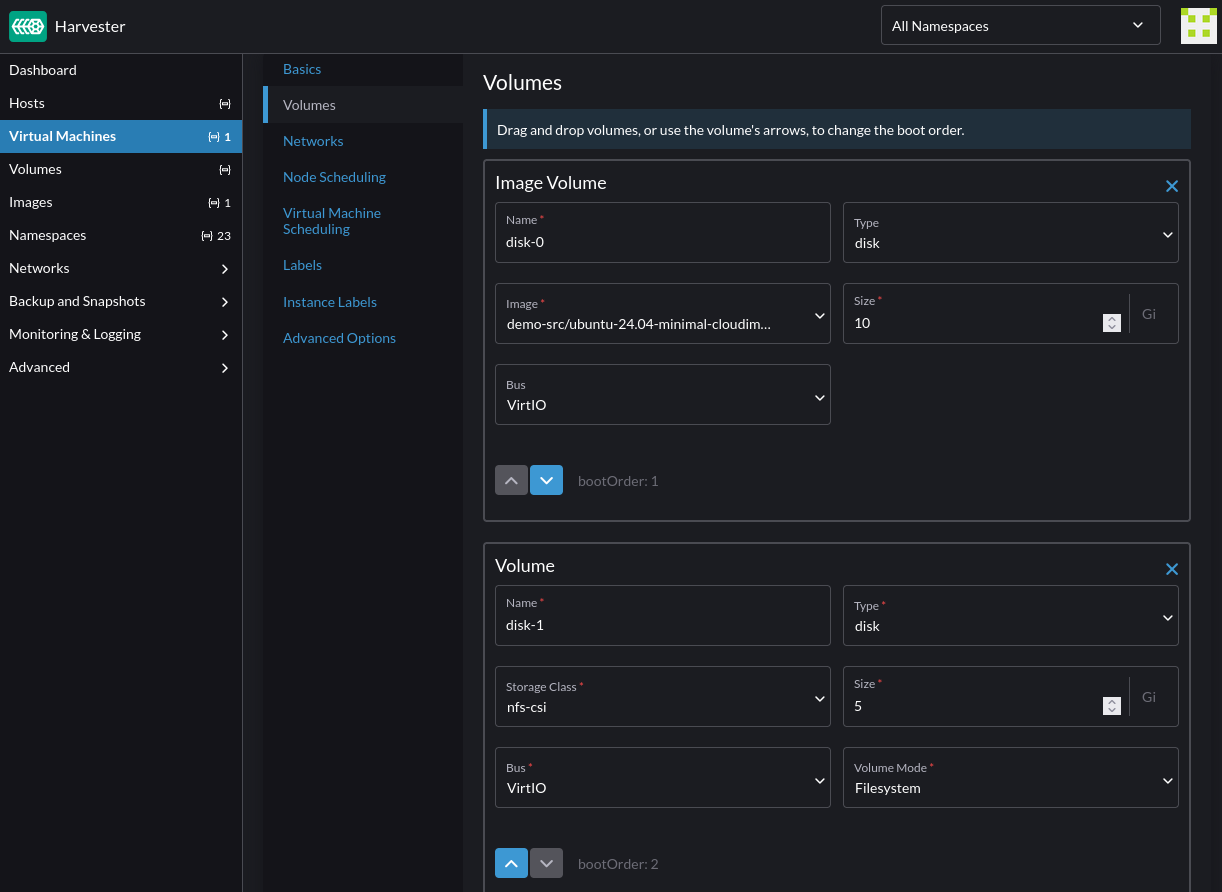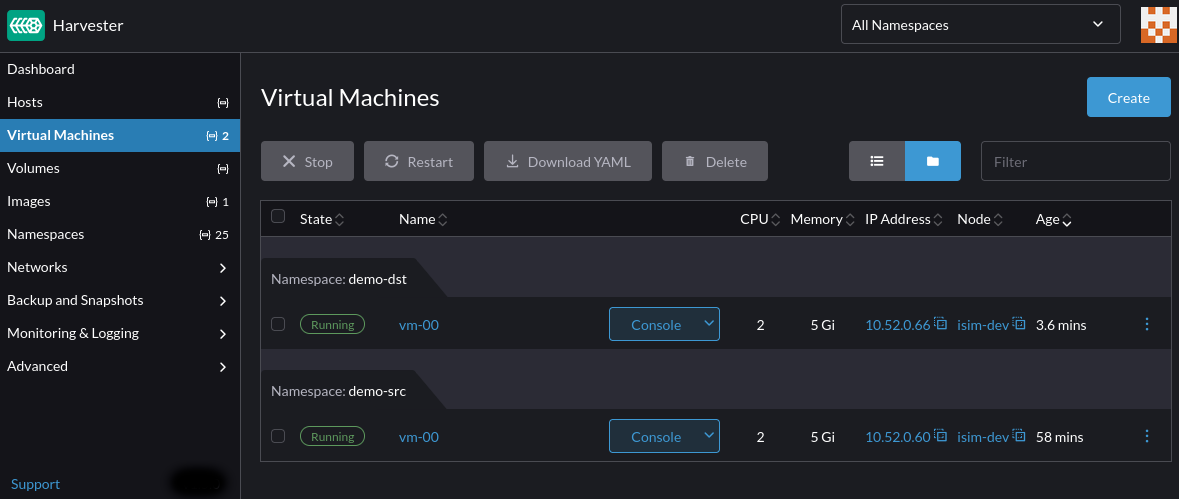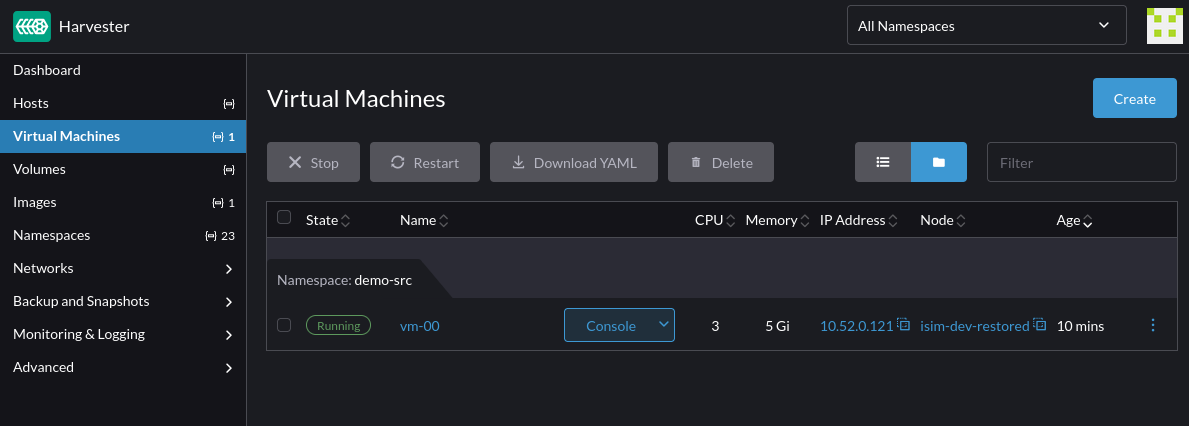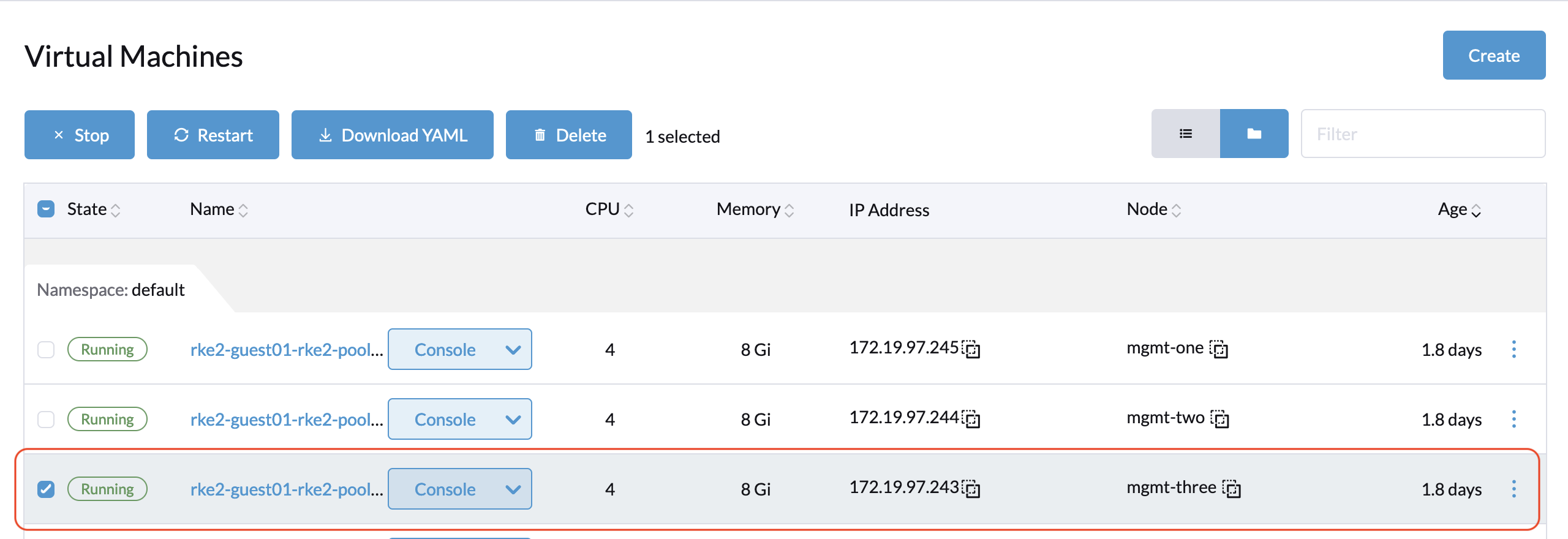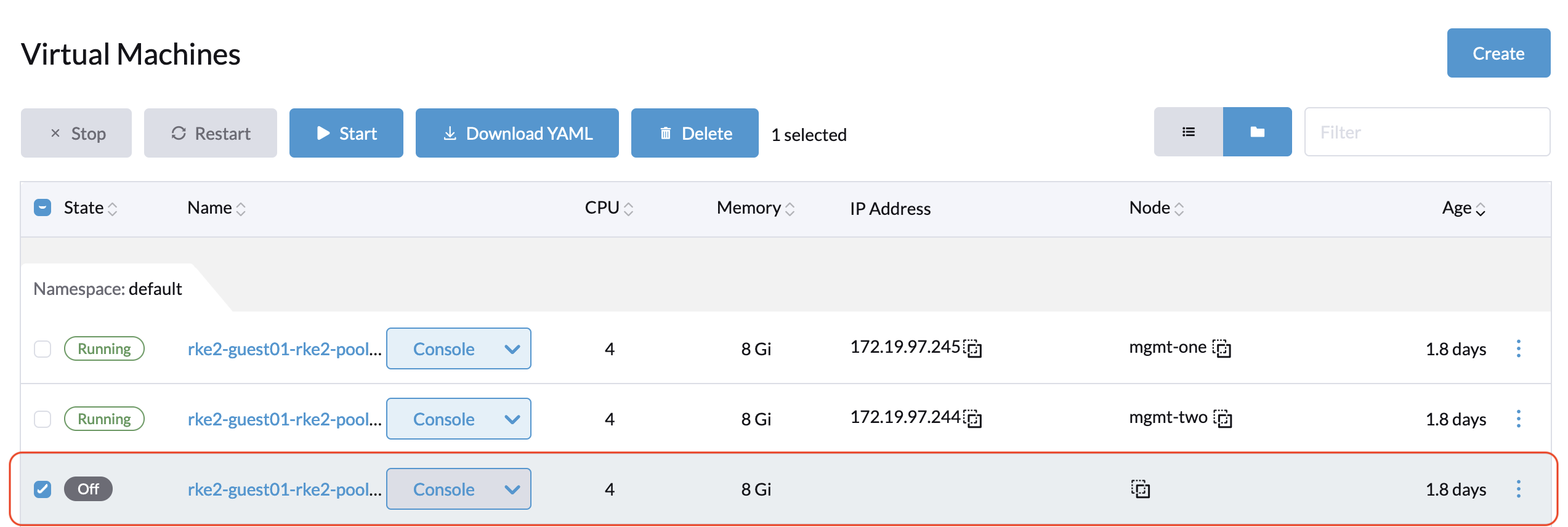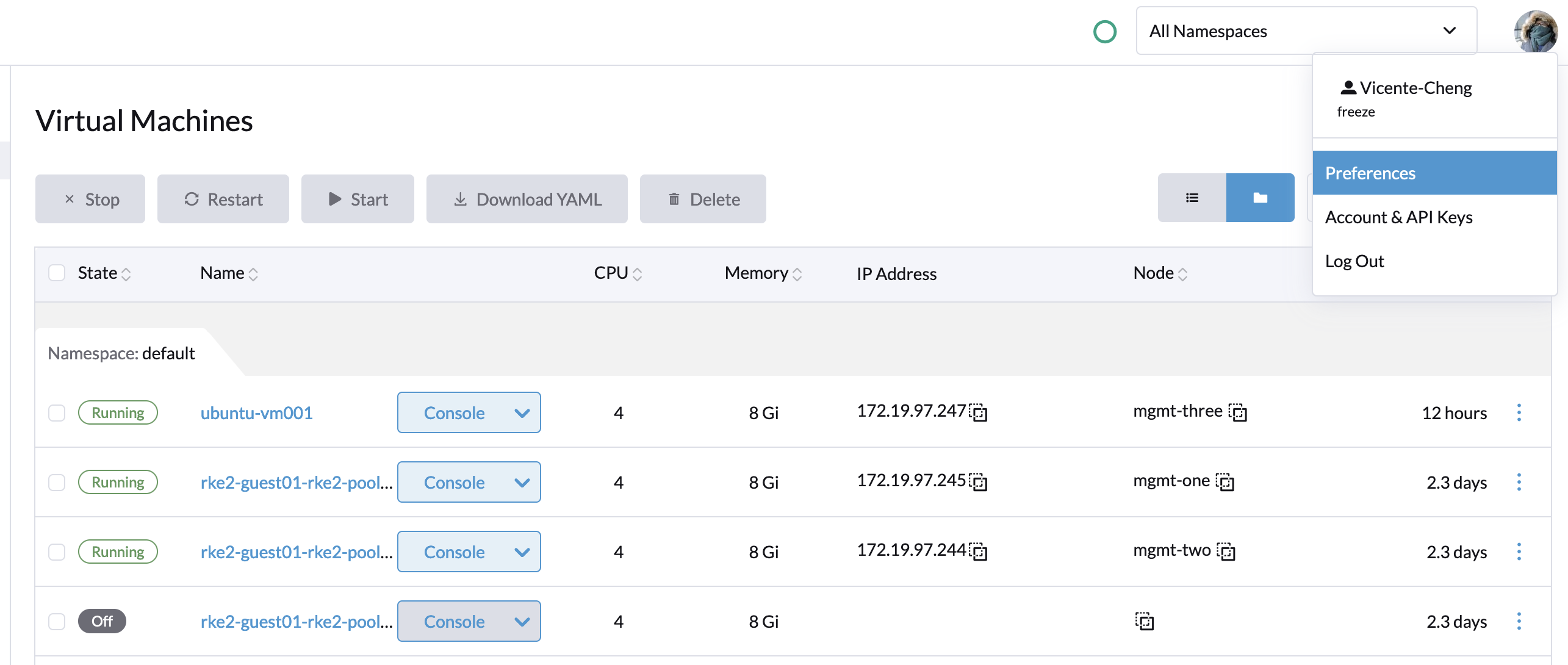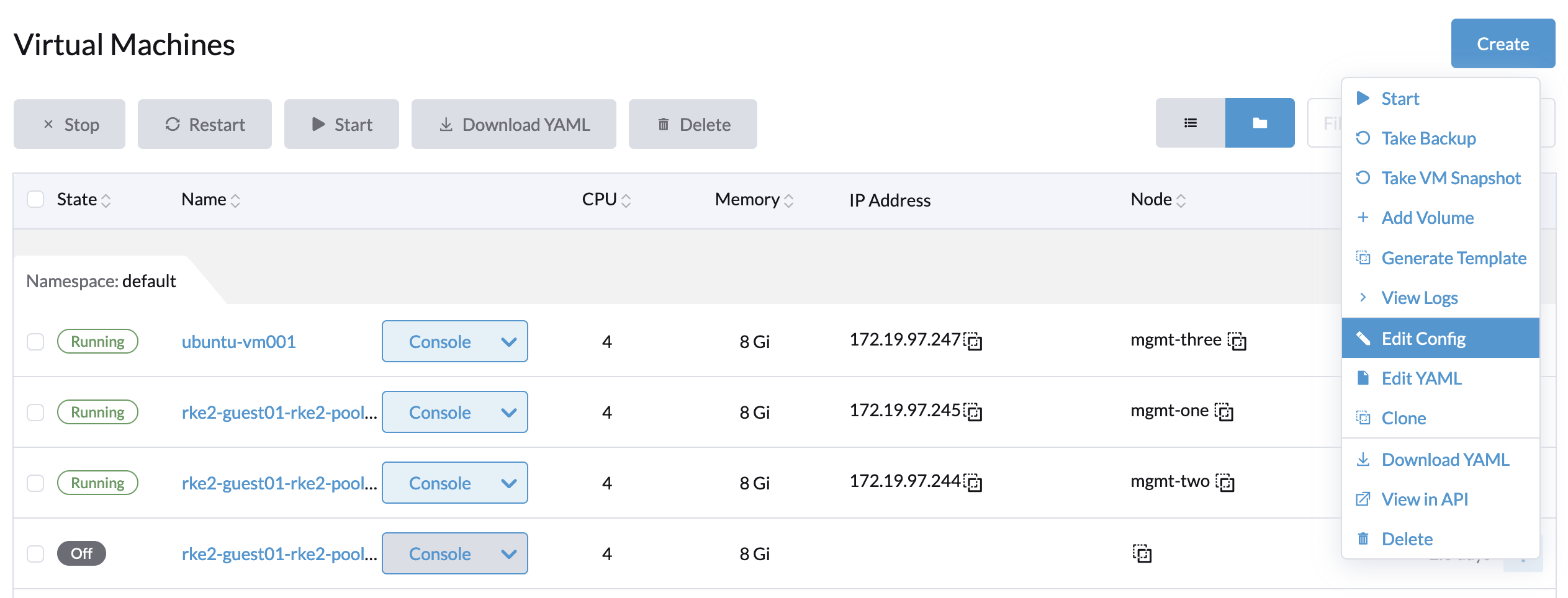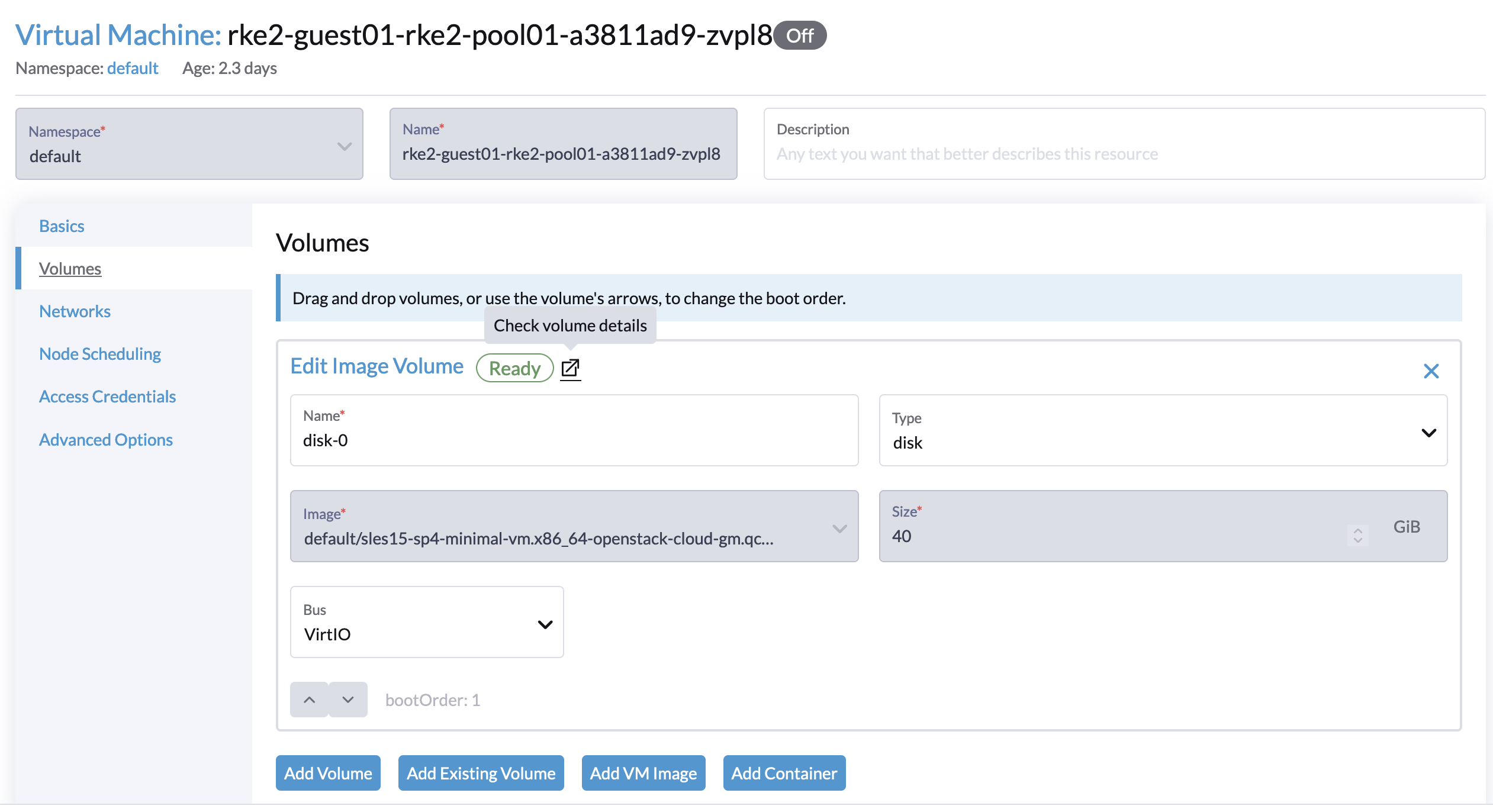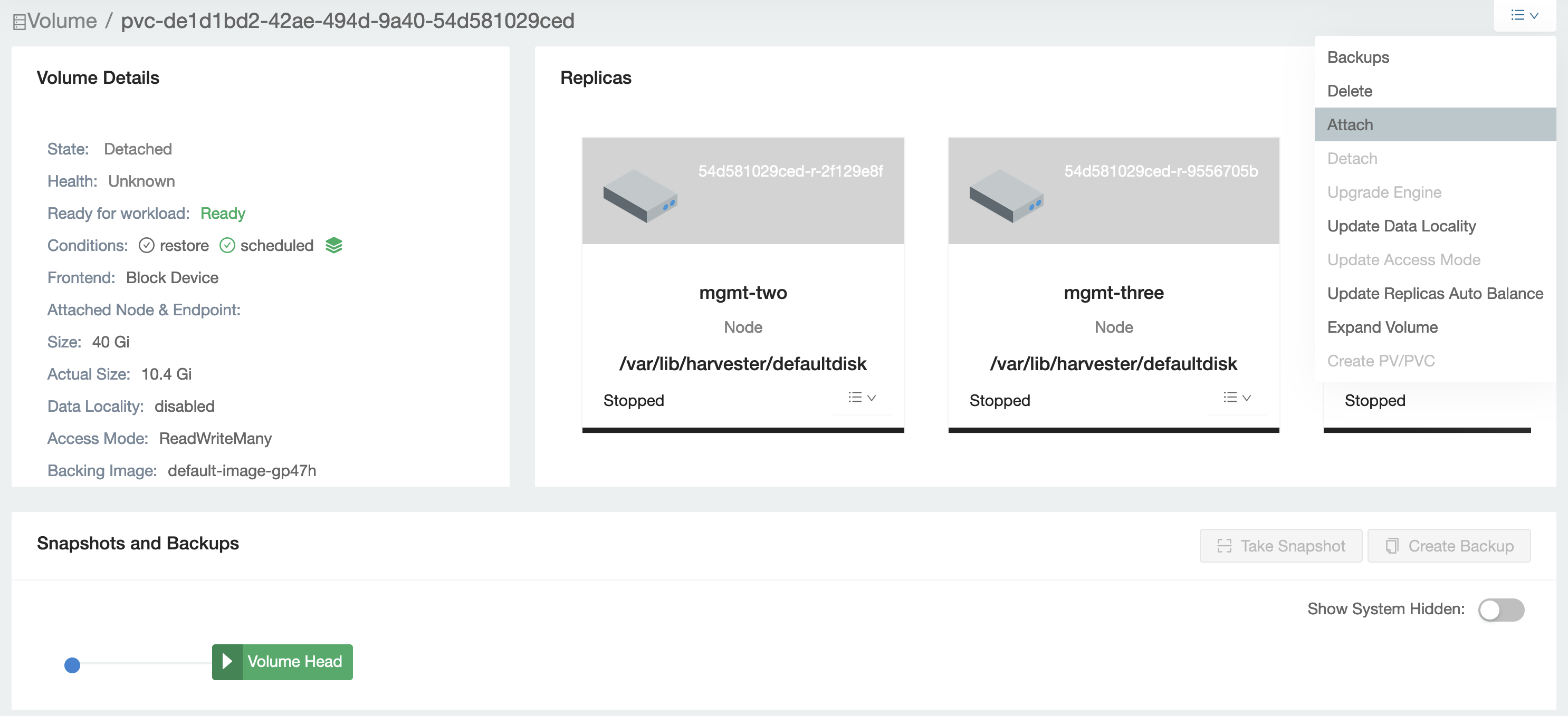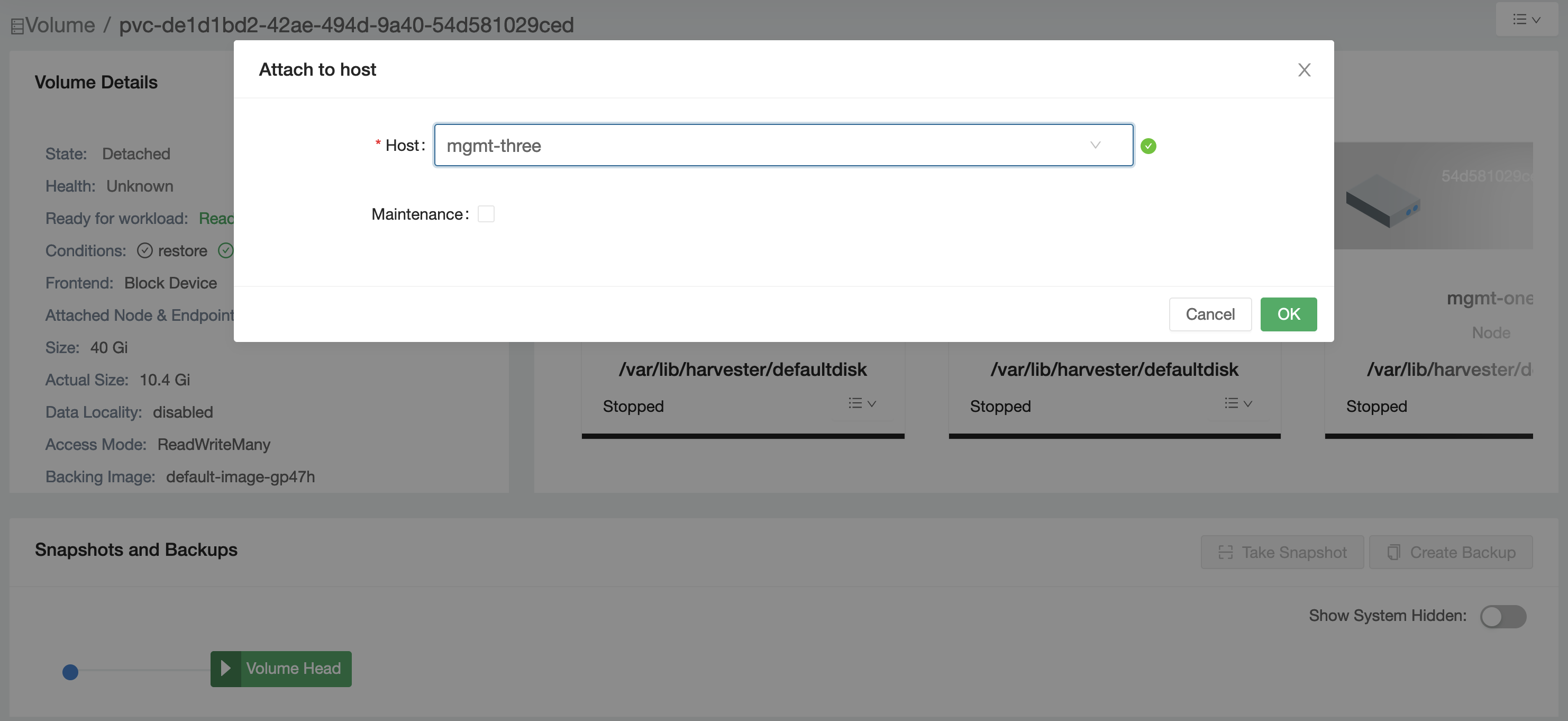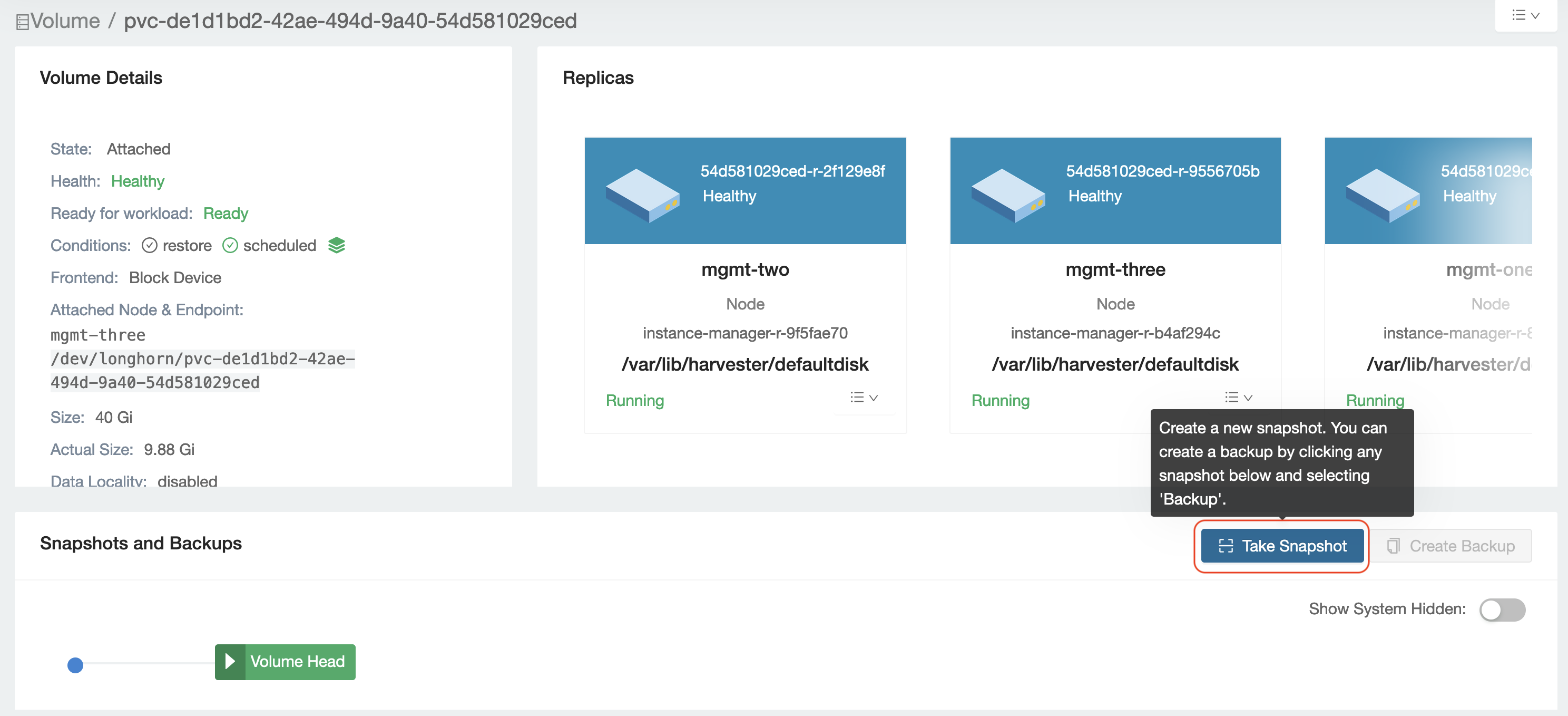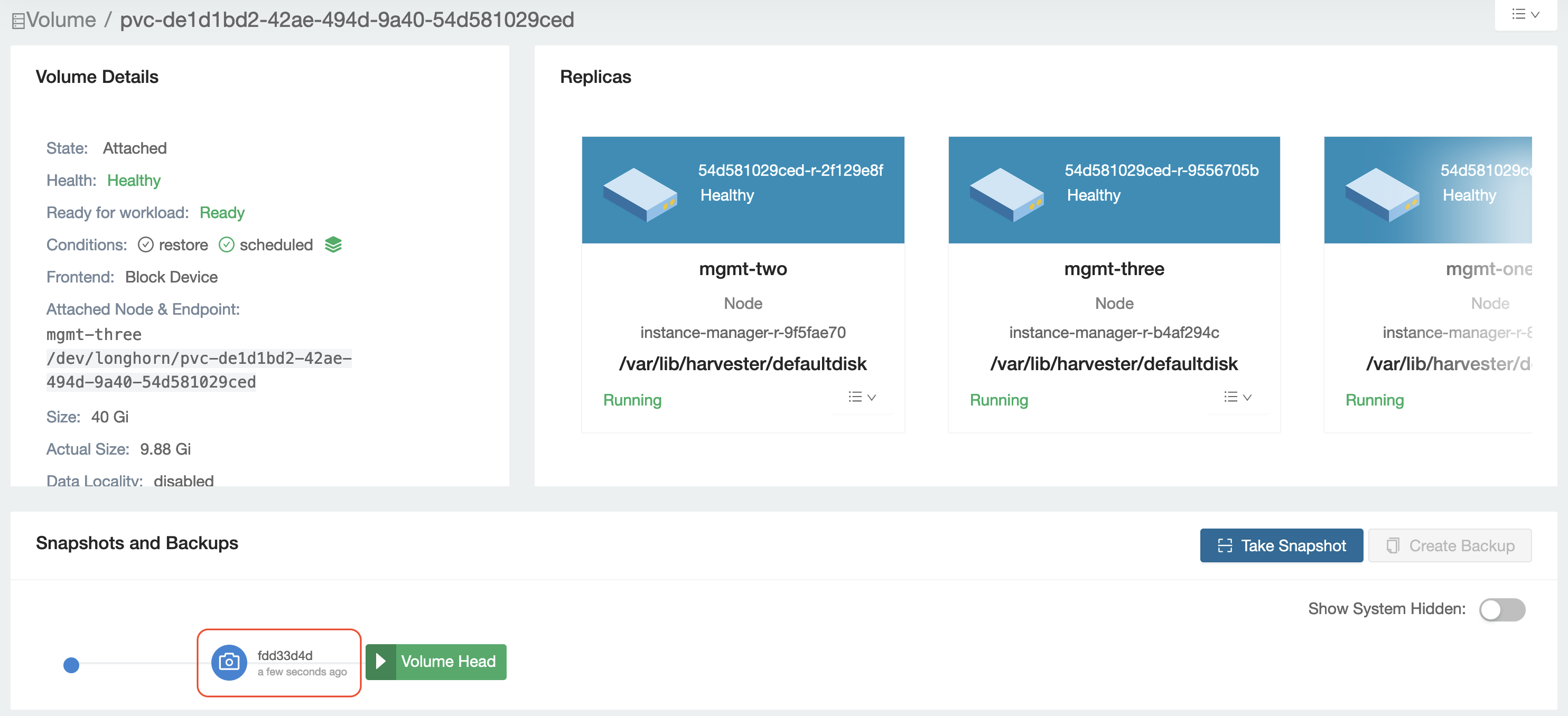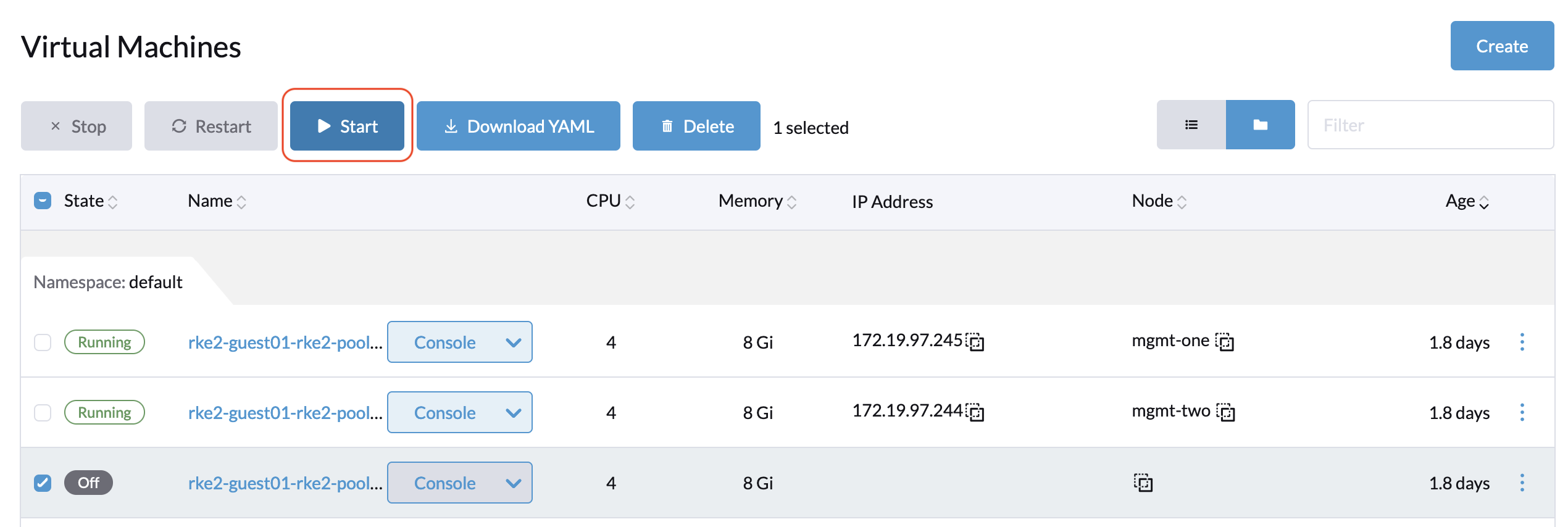In this Harvester Knowledge Base article, Ivan Sim provided comprehensive guidance on using Velero to perform backup and restore operations for VMs with external storage in Harvester.
However, in certain scenarios, users may require the VM filesystem to be quiesced during Velero backup creation to prevent data corruption, especially when the VM is experiencing heavy I/O operations.
This article describes how to customize Velero Backup Hooks to implement filesystem freeze during Velero backup processing, ensuring data consistency in the backup content.
Background Knowledge
KubeVirt's virt-freezer provides a mechanism to freeze and thaw guest filesystems. This capability can be leveraged to ensure filesystem consistency during VM backups. However, certain prerequisites must be met for filesystem freeze/thaw operations to function properly:
Prerequisites for Filesystem Freeze
- QEMU Guest Agent must be enabled in the guest VM
- Verify this by checking if the VMI has AgentConnected in its status
- Guest VM must be properly configured for related libvirt commands
- When virt-freezer is triggered, KubeVirt communicates with the QEMU Guest Agent via libvirt commands such as guest-fsfreeze-freeze
- The guest agent translates these commands to OS-specific calls:
- Linux systems: Uses fsfreeze syscalls
- Windows systems: Uses VSS (Volume Shadow Copy Service) APIs
Common Configuration Challenges
Based on Harvester project experience, some guest operating systems require additional configuration:
- Linux distributions (e.g., RHEL, SLE Micro): May lack sufficient permissions for filesystem freeze operations by default, requiring custom policies
- Windows guests: Require the VSS service to be enabled for filesystem freeze functionality
Important: Filesystem freeze/thaw functionality depends on guest VM configuration, which is outside Harvester's control. Users are responsible for ensuring compatibility before implementing Velero backup hooks with filesystem freeze.
Verifying Filesystem Freeze Compatibility
To confirm that your VM supports filesystem freeze operations:
Access the virtual machine's virt-launcher
computecontainer:POD=$(kubectl get pods -n <VM Namespace> \
-l vm.kubevirt.io/name=<VM Name> \
-o jsonpath='{.items[0].metadata.name}')
kubectl exec -it $POD -n default -c compute -- bashTest filesystem freeze using the virt-freezer application available in the
computecontainer:virt-freezer --freeze --namespace <VM namespace> --name <VM name>Critical: Always verify the freeze operation result and thaw the VM filesystems before performing any other operations
Prerequisites
All preparation steps outlined in External CSI Storage Backup and Restore With Velero are mandatory, including:
- Harvester installation and configuration
- Velero installation and setup
- S3-compatible storage configuration
- Proper networking and permissions
Implementing Filesystem Freeze Hooks for VM Backup Consistency
Velero supports pre and post backup hooks that can be integrated with KubeVirt's virt-freezer to ensure filesystem consistency during VM backups.
Configuring VM Template Annotations
For all VMs requiring data consistency, add the following annotations to the VM template:
apiVersion: kubevirt.io/v1
kind: VirtualMachine
metadata:
name: vm-nfs
namespace: demo
spec:
template:
metadata:
annotations:
# These annotations will be applied to the virt-launcher pod
pre.hook.backup.velero.io/command: '["/usr/bin/virt-freezer", "--freeze", "--namespace", "<VM Namespace>", "--name", "<VM Name>"']'
pre.hook.backup.velero.io/container: compute
pre.hook.backup.velero.io/on-error: Fail
pre.hook.backup.velero.io/timeout: 30s
post.hook.backup.velero.io/command: '["/usr/bin/virt-freezer", "--unfreeze", "--namespace", "<VM Namespace>", "--name", "<VM Name>"]'
post.hook.backup.velero.io/container: compute
post.hook.backup.velero.io/timeout: 30s
spec:
# ...rest of VM spec...
These annotations will be propagated to the related virt-launcher pod and instruct Velero to:
- Freeze the VM filesystem before backup creation begins
- Thaw the VM filesystem after backup completion
Important: Replace <VM Namespace> and <VM Name> with the actual namespace and name of your VM.
Creating a Velero Backup with Filesystem Freeze
After applying the Velero pre/post hook annotations to the VM manifest, follow the backup procedures described in External CSI Storage Backup and Restore With Velero.
Verifying Successful Hook Execution
If the guest VM is configured correctly, the Velero backup will complete successfully with HooksAttempted indicating successful hook execution.
Check the backup status using:
velero backup describe [Backup Name] --details
Example output showing successful hook execution:
Name: demo
Namespace: velero
Labels: velero.io/storage-location=default
Annotations: velero.io/resource-timeout=10m0s
velero.io/source-cluster-k8s-gitversion=v1.33.3+rke2r1
velero.io/source-cluster-k8s-major-version=1
velero.io/source-cluster-k8s-minor-version=33
Phase: Completed
Namespaces:
Included: demo
Excluded: <none>
Resources:
Included: *
Excluded: <none>
Cluster-scoped: auto
Label selector: <none>
Or label selector: <none>
Storage Location: default
Velero-Native Snapshot PVs: auto
Snapshot Move Data: true
Data Mover: velero
....
Backup Volumes:
Velero-Native Snapshots: <none included>
CSI Snapshots:
demo/vm-nfs-disk-0-au2ej:
Data Movement:
Operation ID: du-be5417aa-498e-4b93-b59f-e6498f95a6df.d7f97dab-3bb1-41e189381
Data Mover: velero
Uploader Type: kopia
Moved data Size (bytes): 5368709120
Result: succeeded
Pod Volume Backups: <none included>
HooksAttempted: 2
HooksFailed: 0
The output shows that Velero pre/post backup hooks completed successfully. In this case, the hooks are connected to guest VM filesystem freeze and thaw operations to ensure data consistency.
Restoring the Velero Backup
Follow the restoration procedures described in External CSI Storage Backup and Restore With Velero to restore the namespace using Velero.
Troubleshooting
If you encounter issues with filesystem freeze operations:
- Verify QEMU Guest Agent status in the VMI
- Check guest OS configuration for filesystem freeze support
- Review Velero hook logs for specific error messages
- Test virt-freezer manually as described in the verification section
Conclusion
Implementing filesystem freeze hooks with Velero ensures data consistency during VM backups by quiescing the filesystem before snapshot creation. This approach is particularly valuable for VMs with high I/O activity or critical data that requires point-in-time consistency guarantees.

